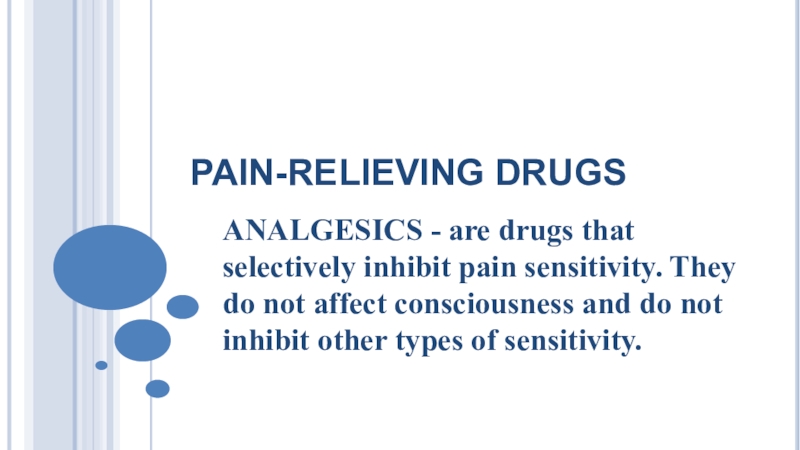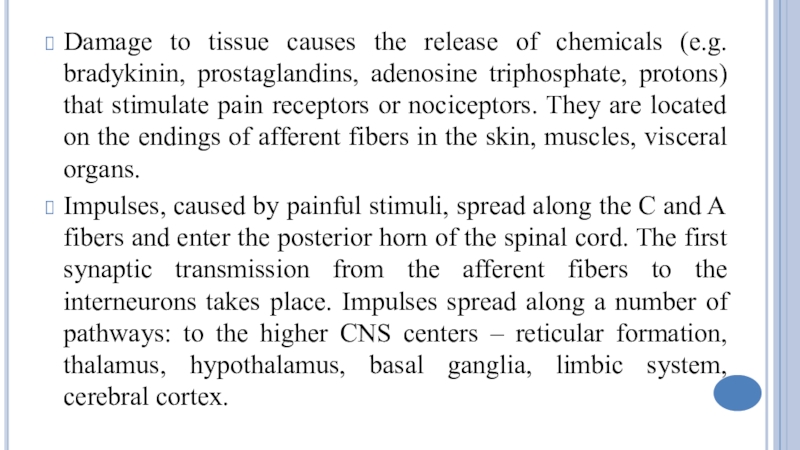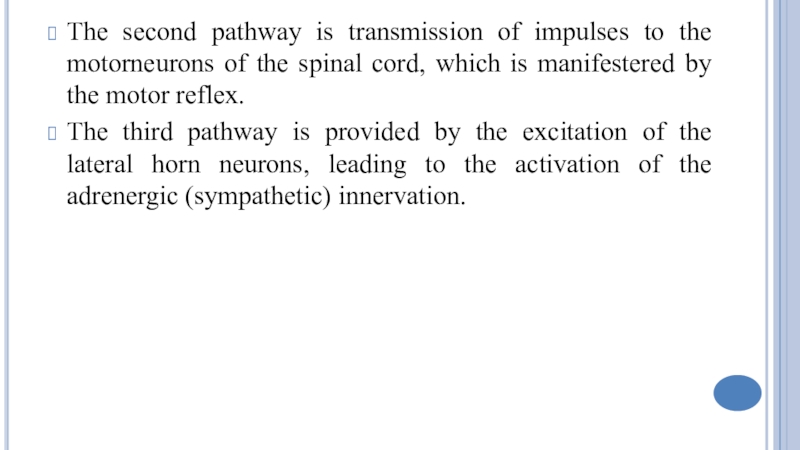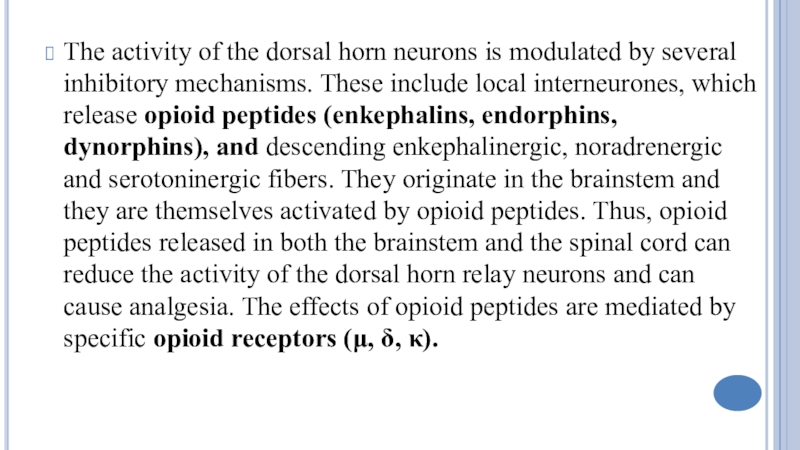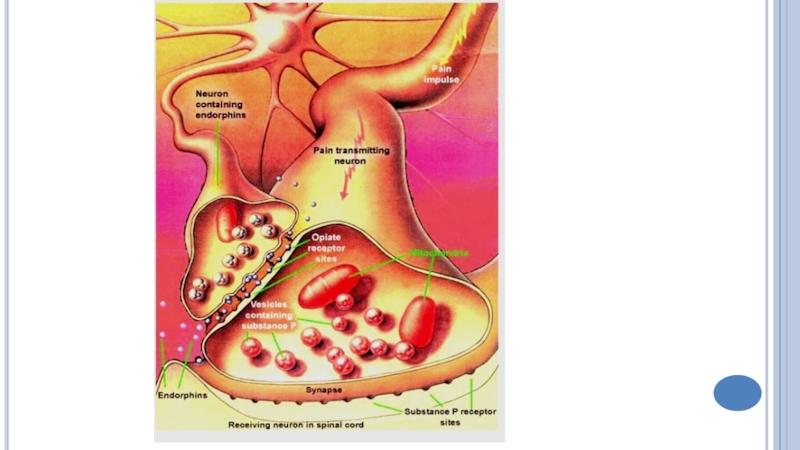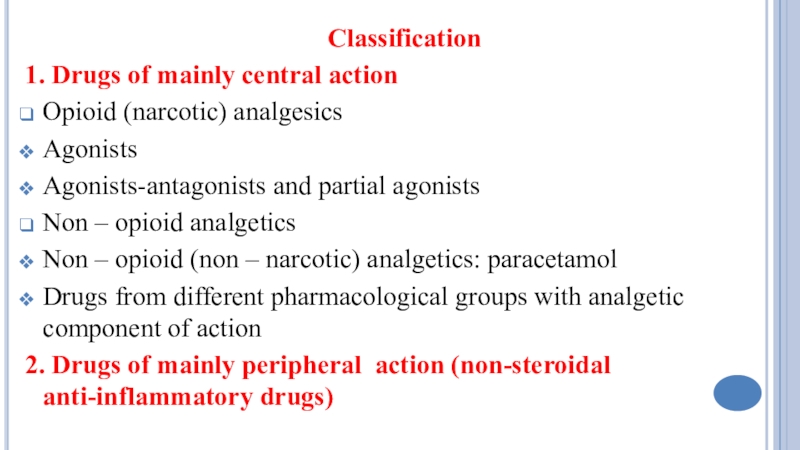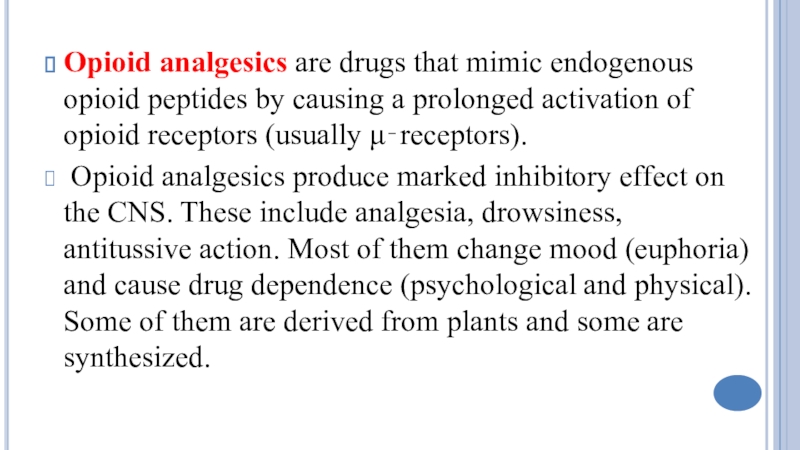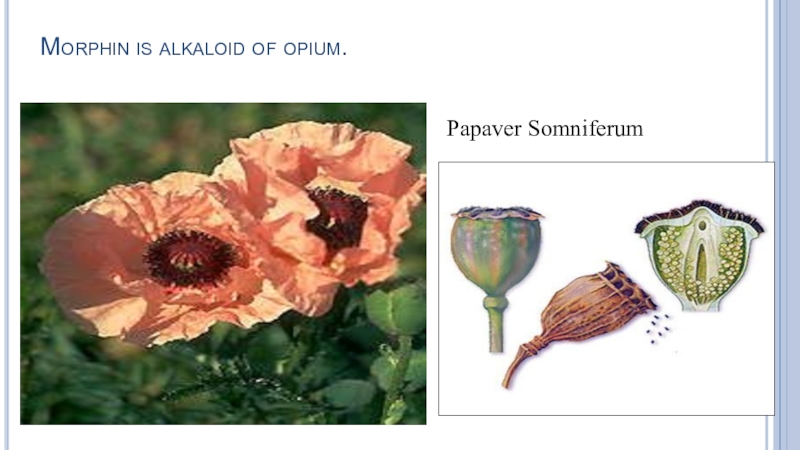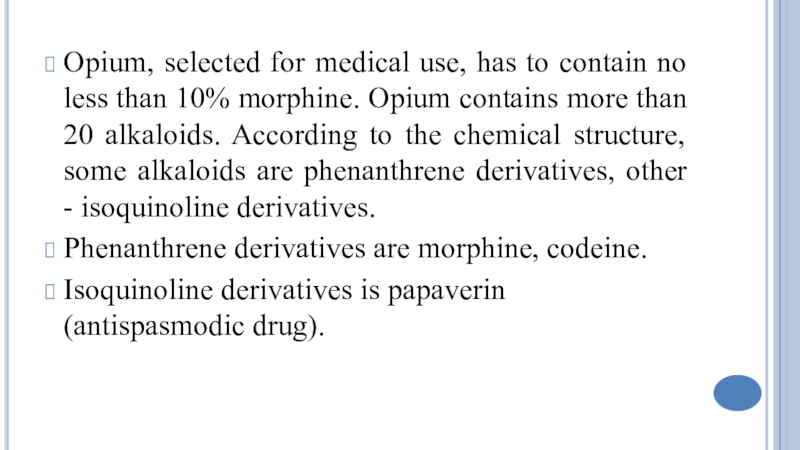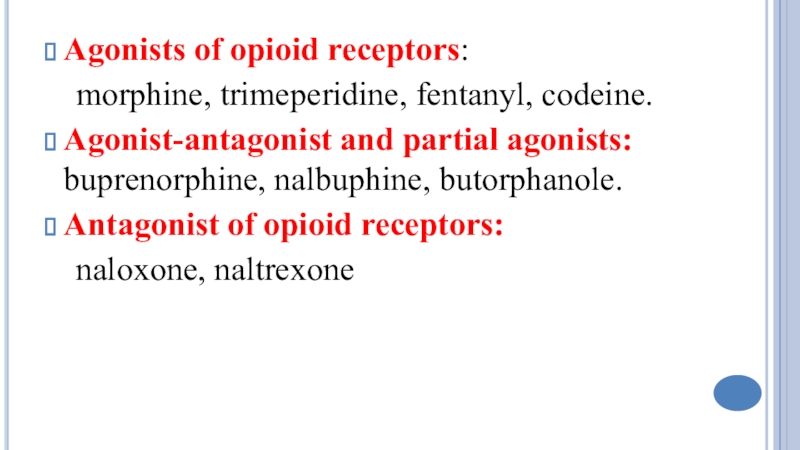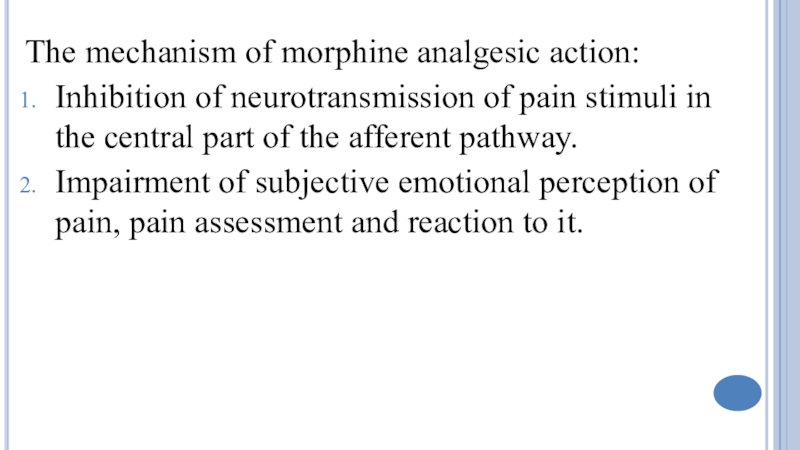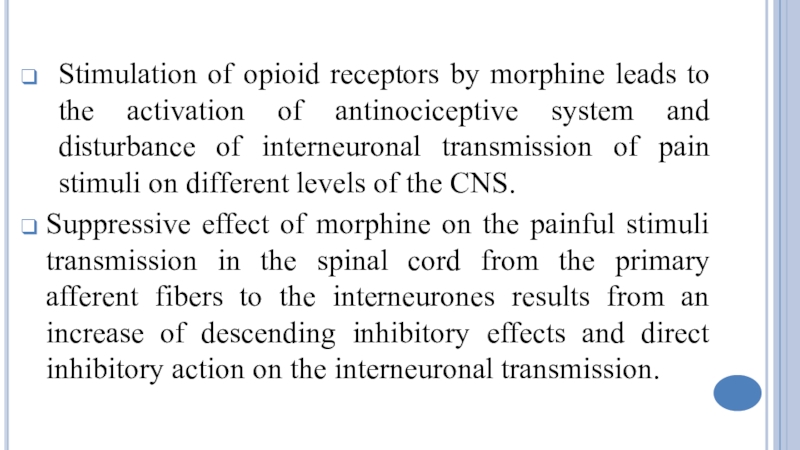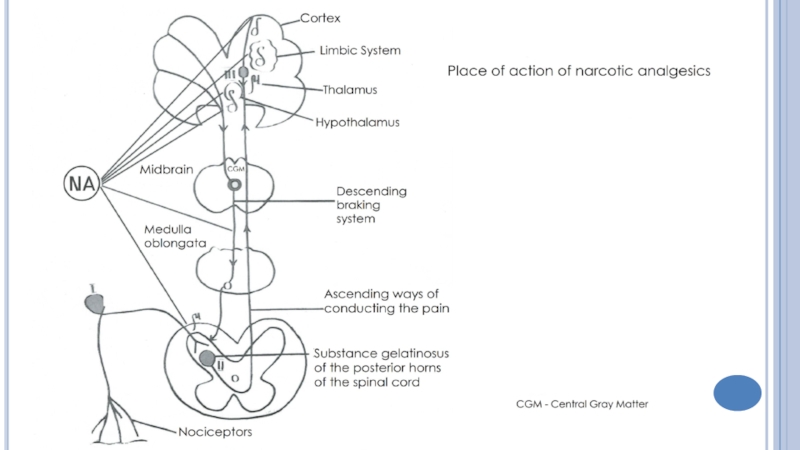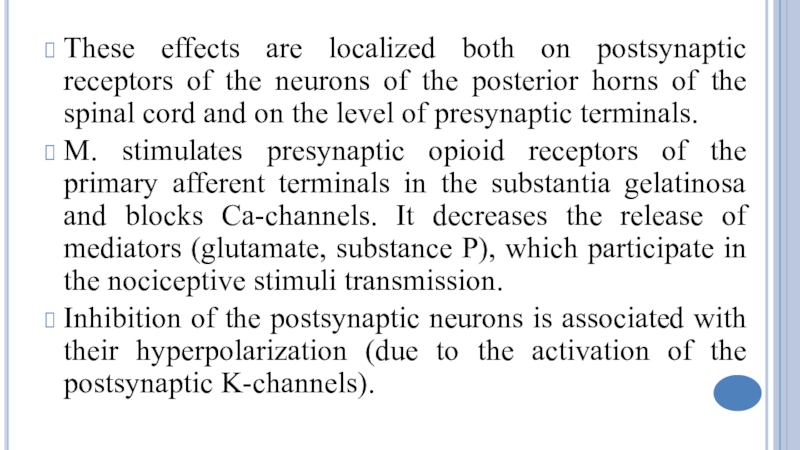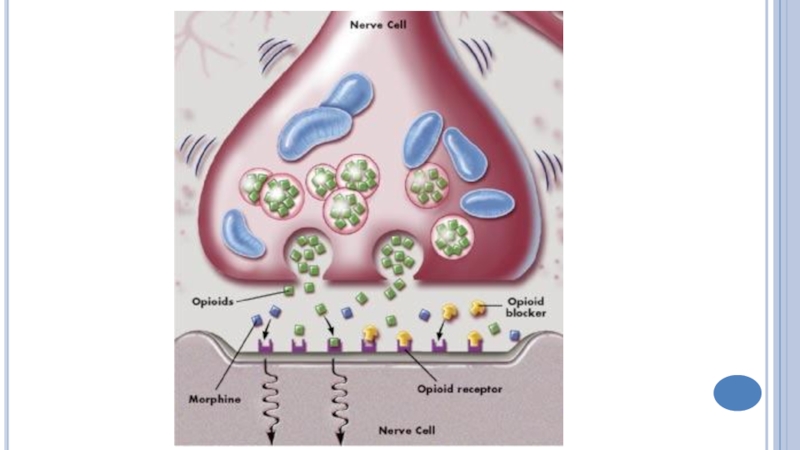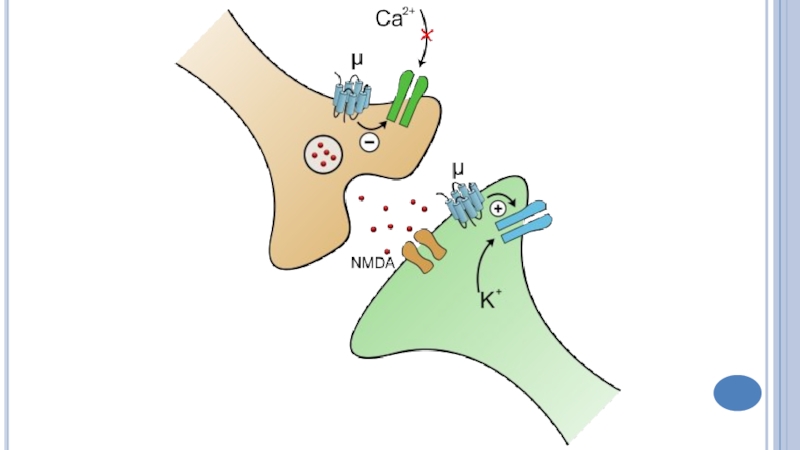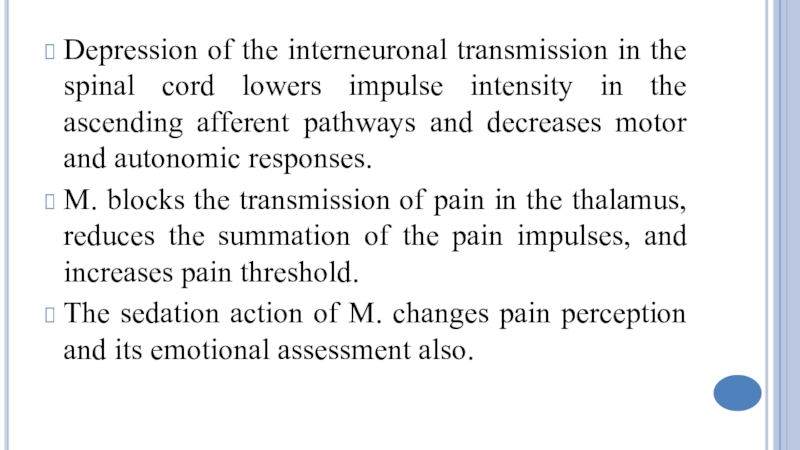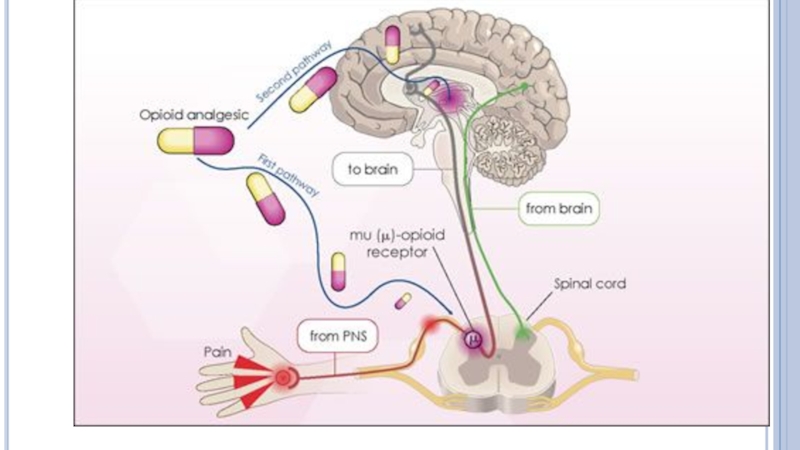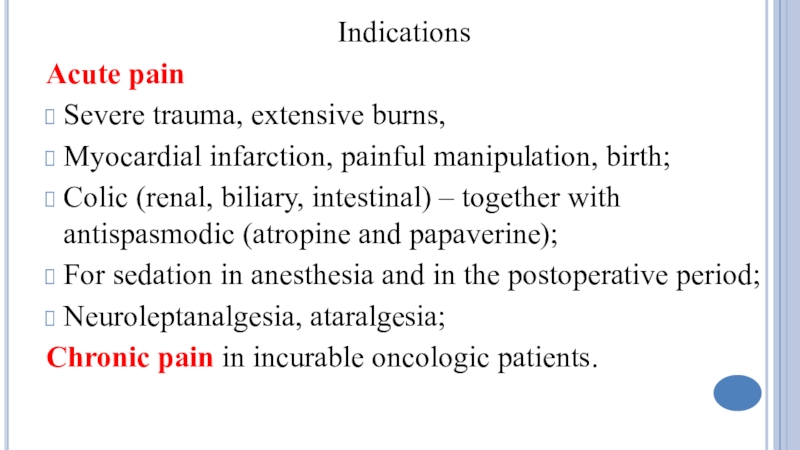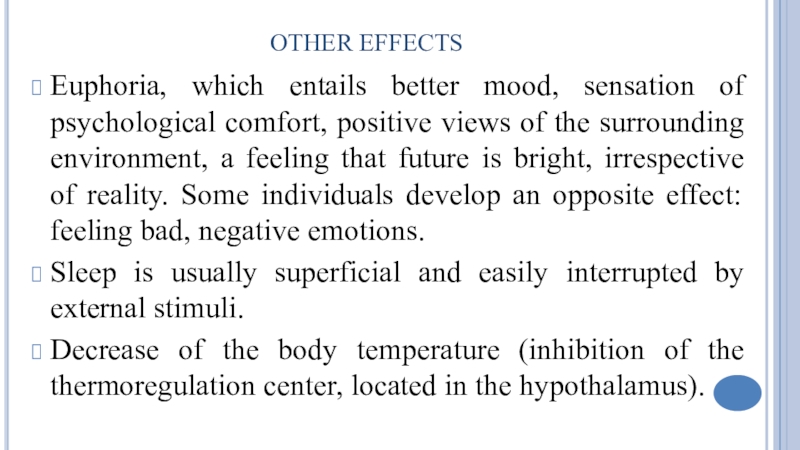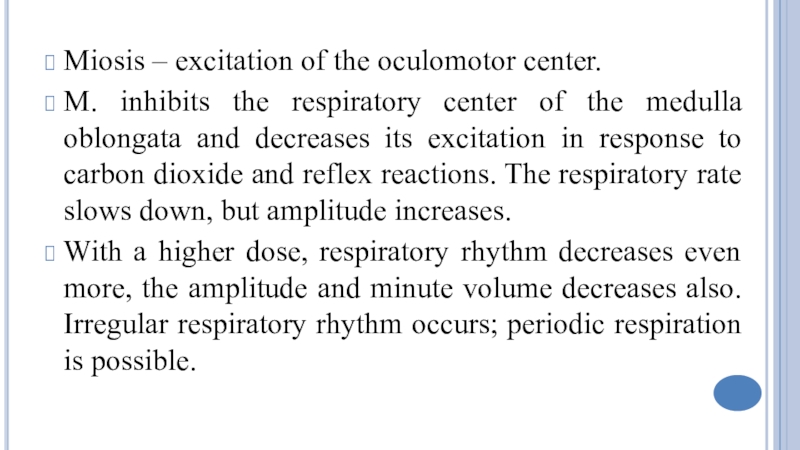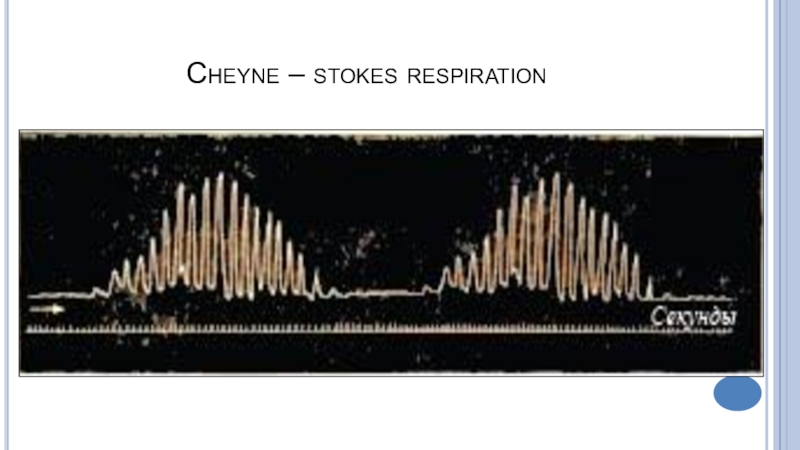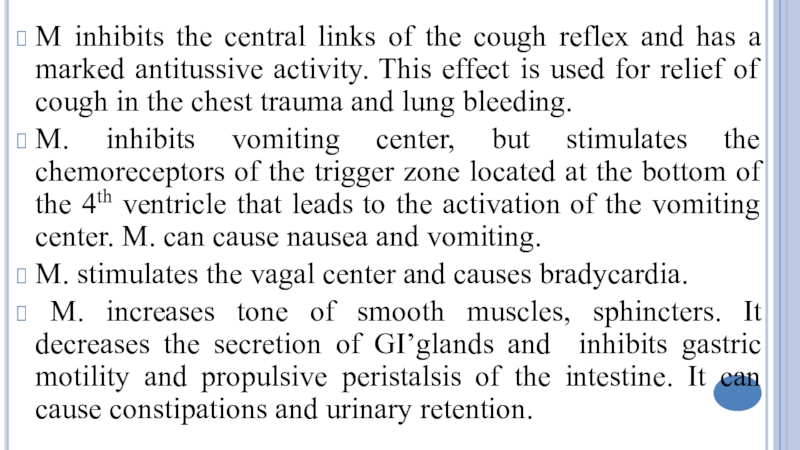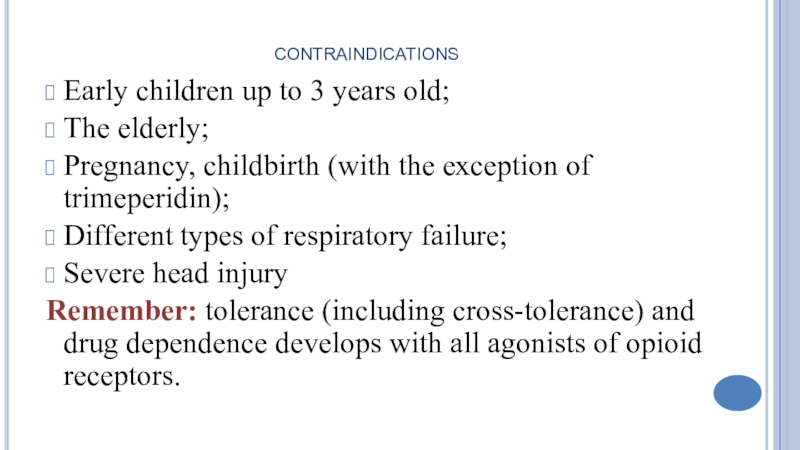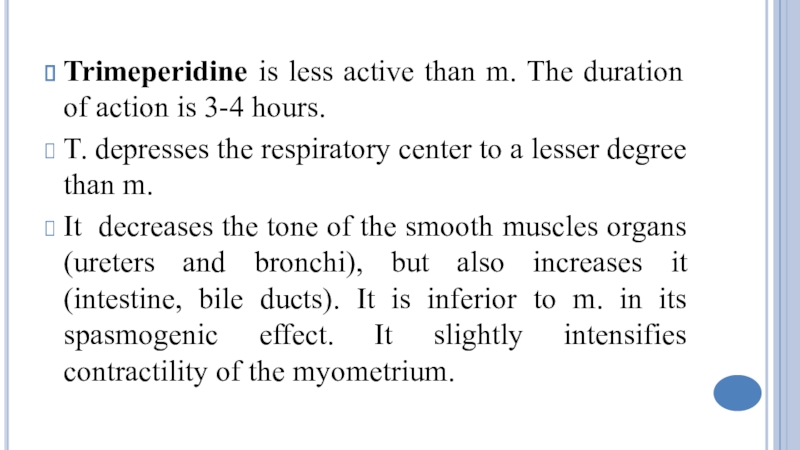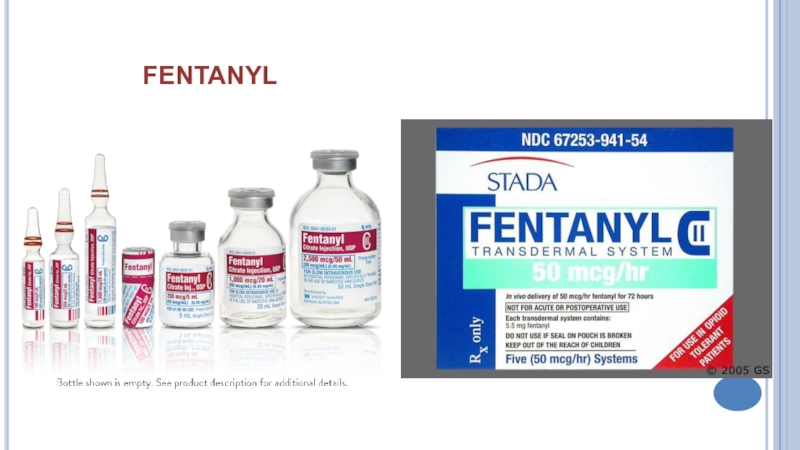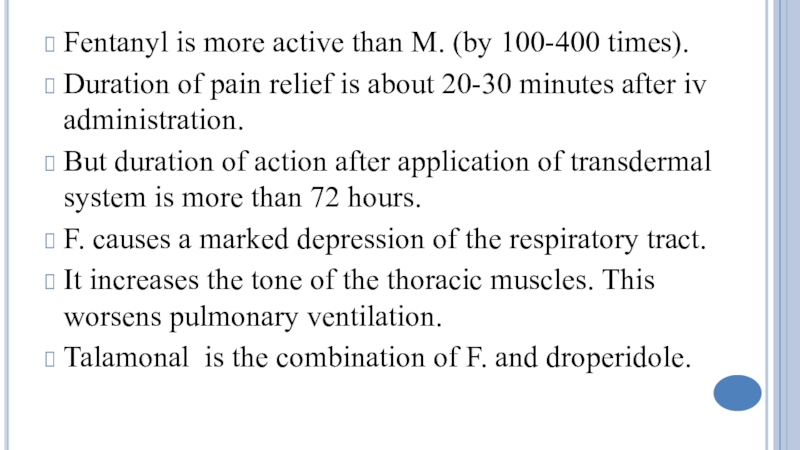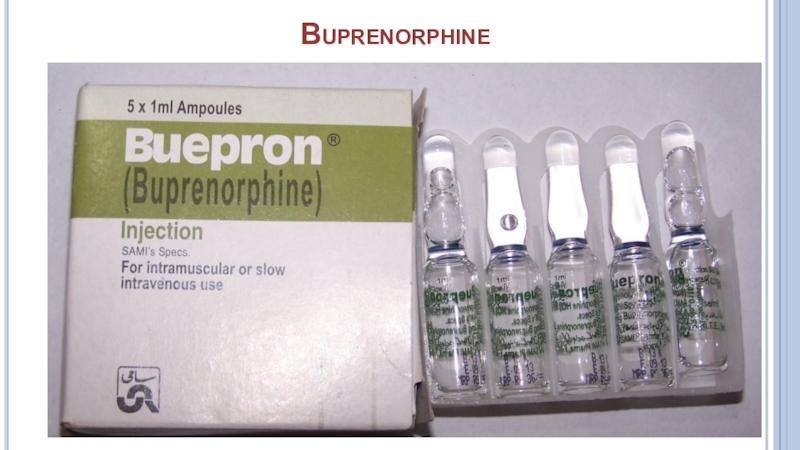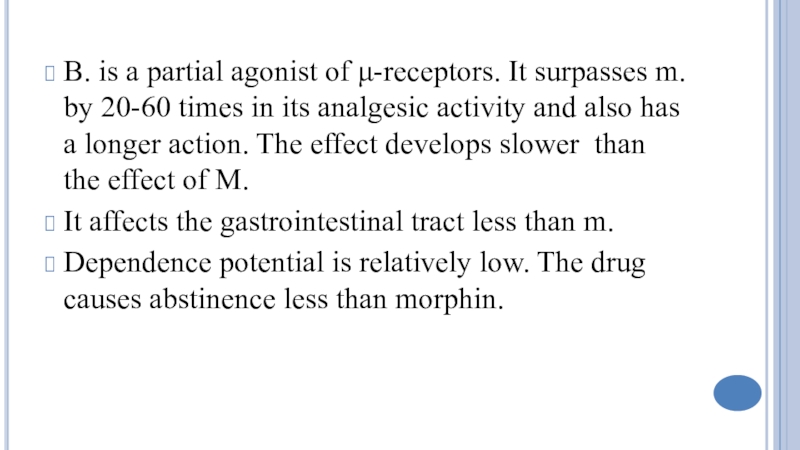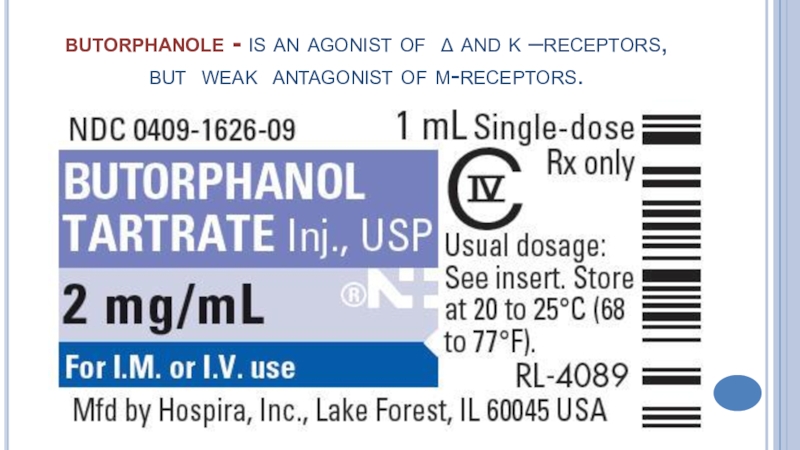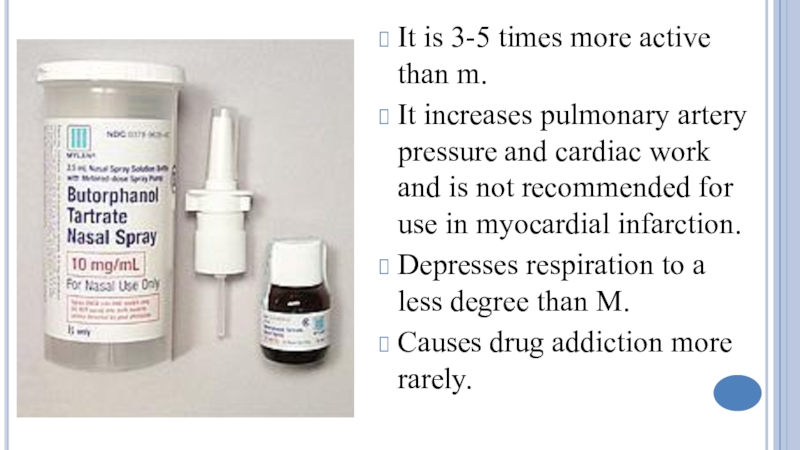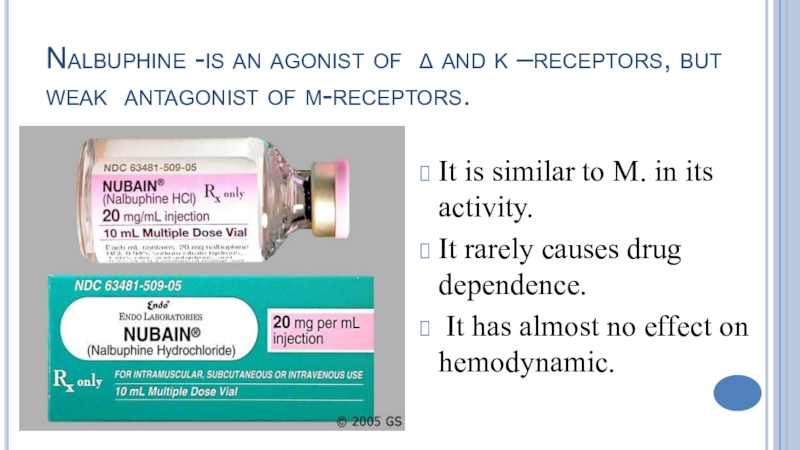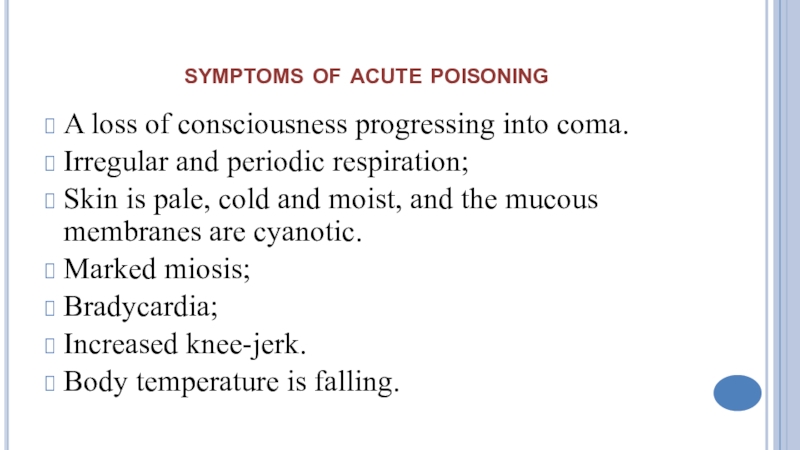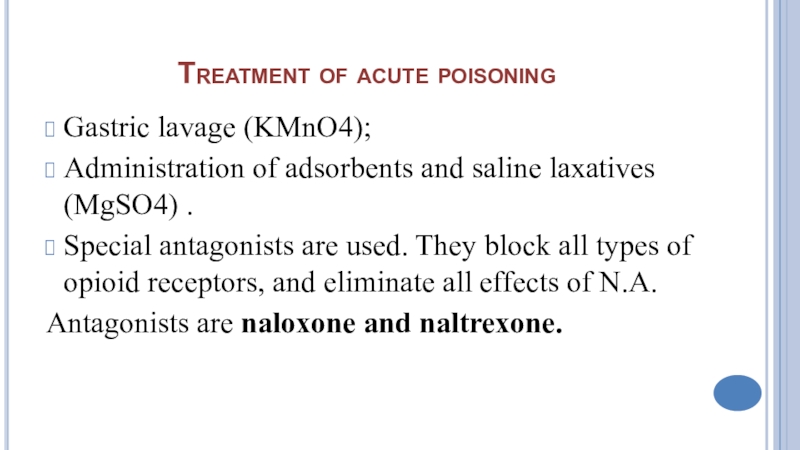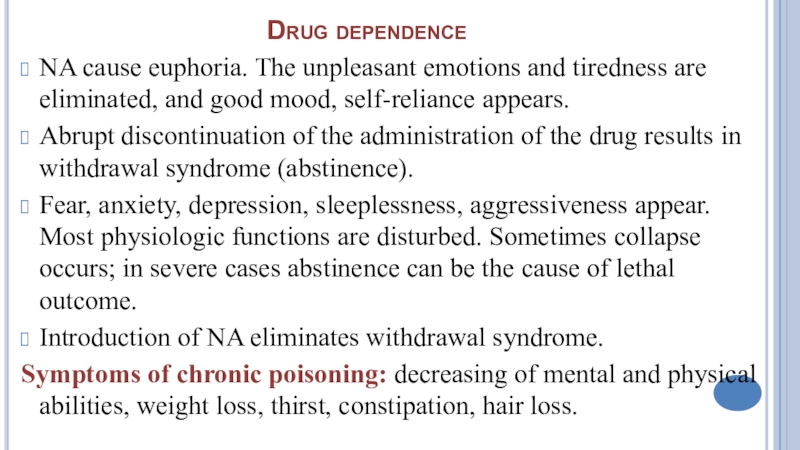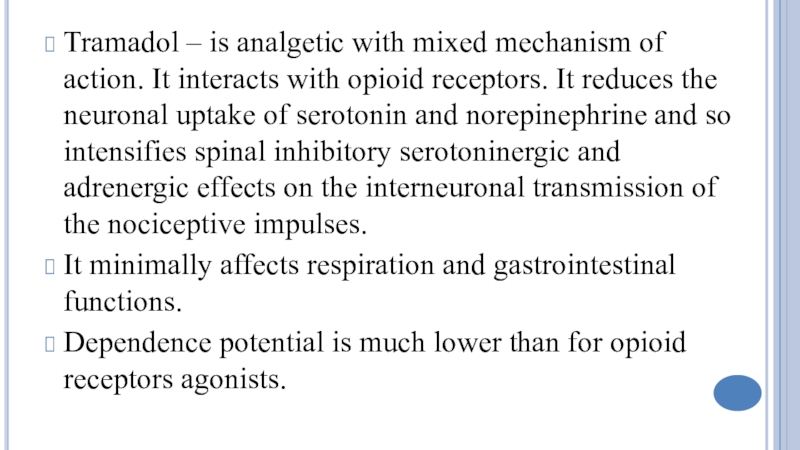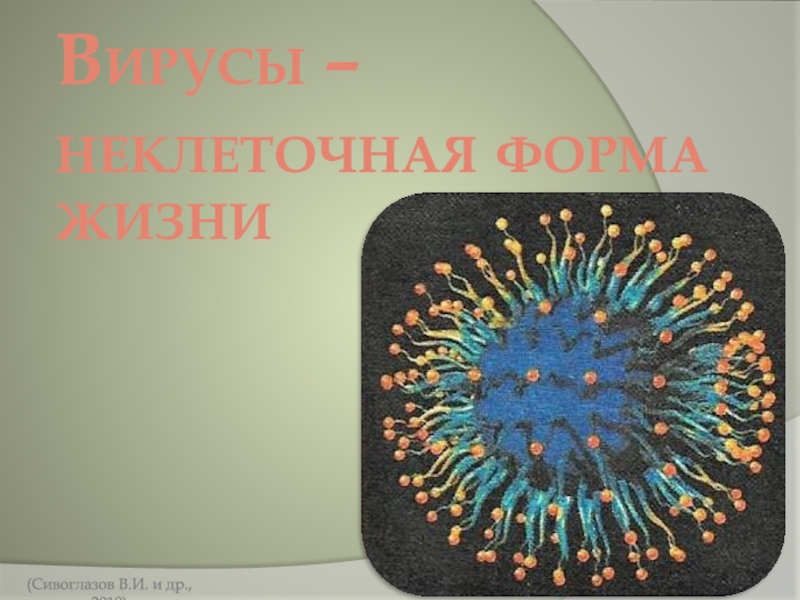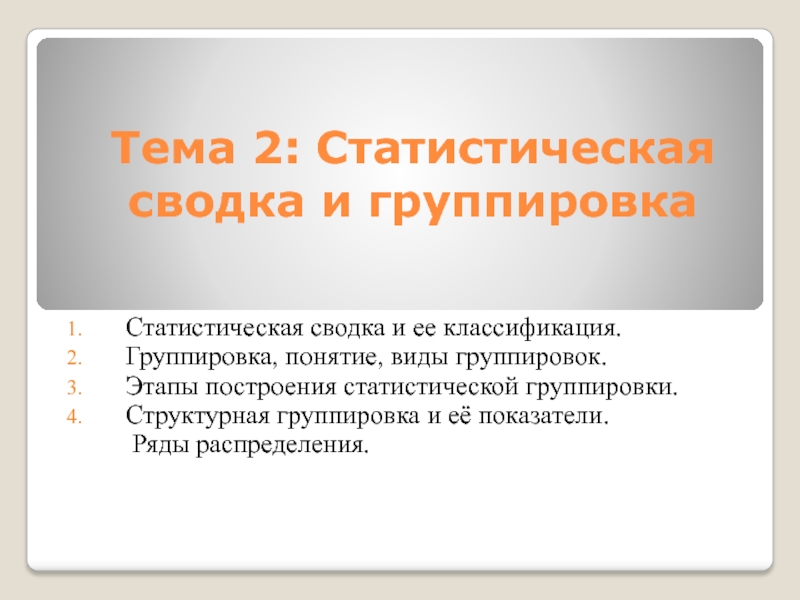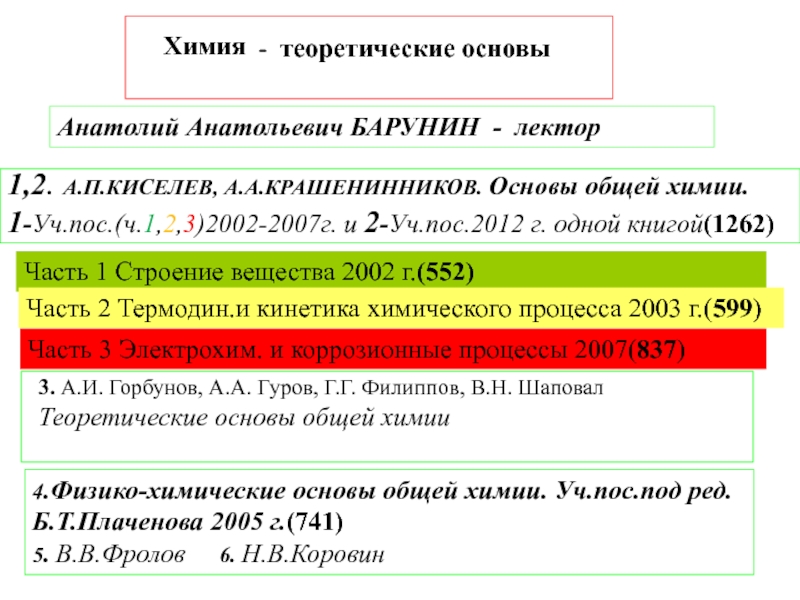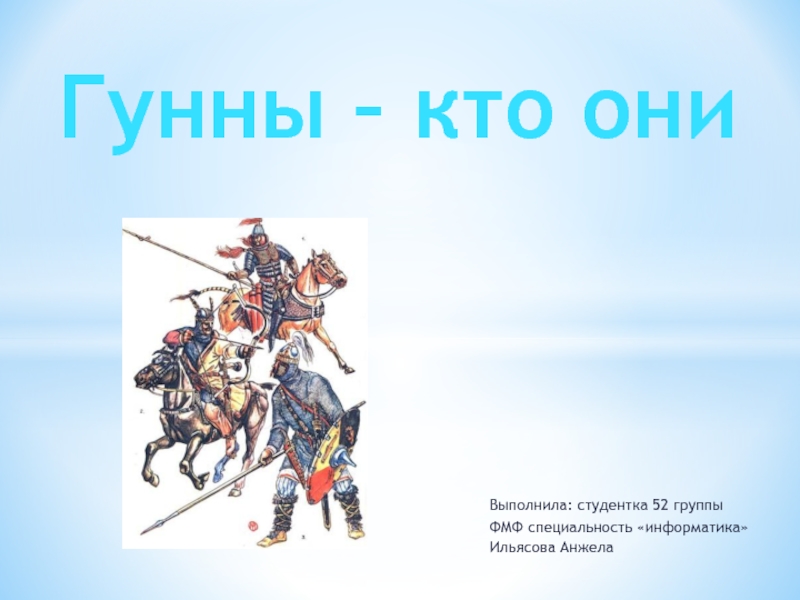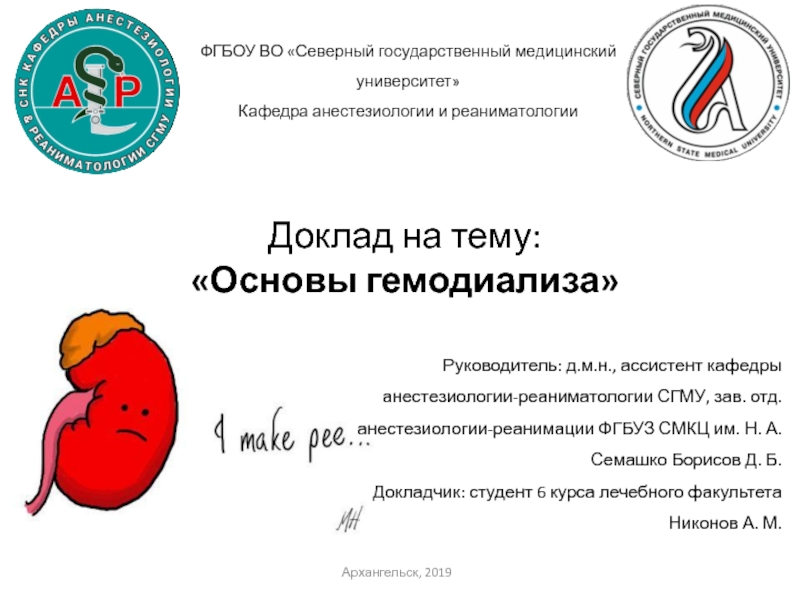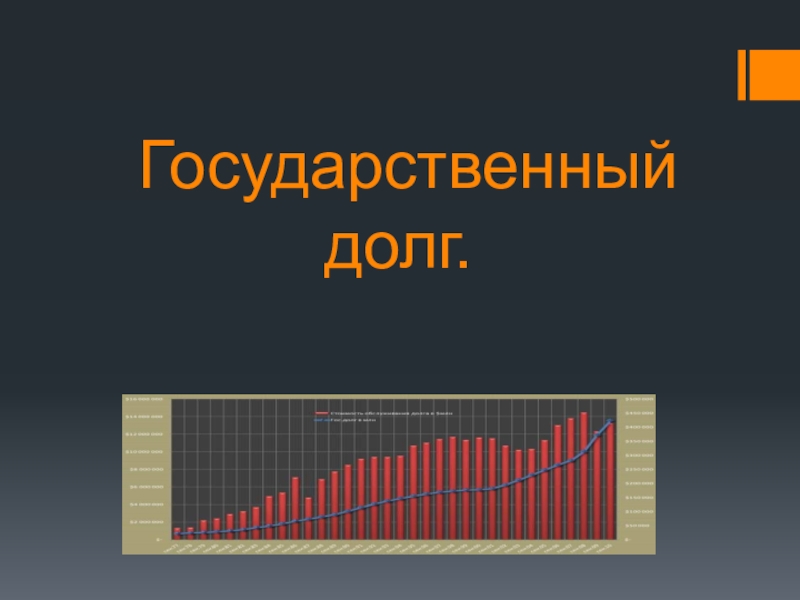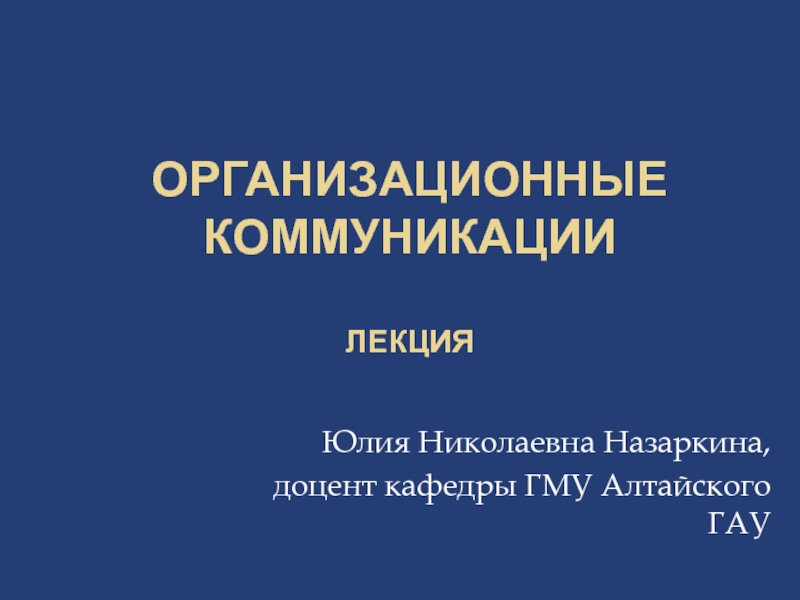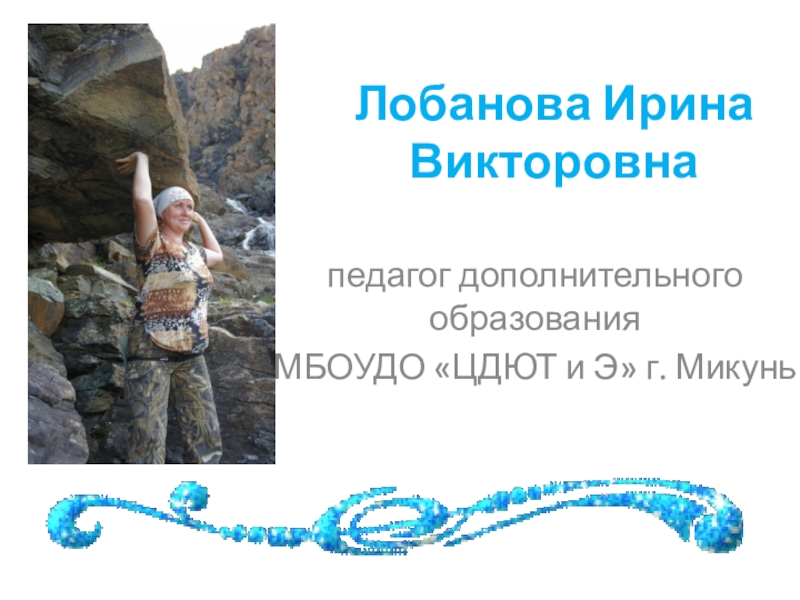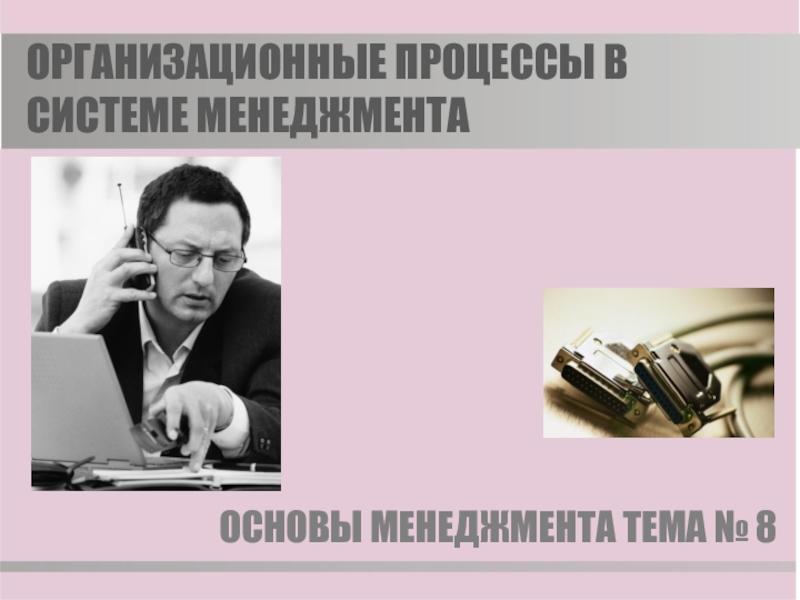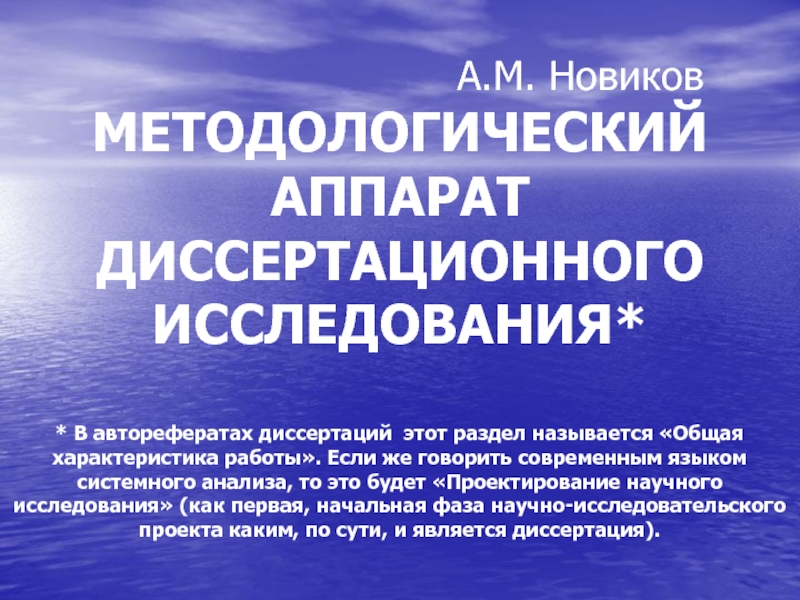Разделы презентаций
- Разное
- Английский язык
- Астрономия
- Алгебра
- Биология
- География
- Геометрия
- Детские презентации
- Информатика
- История
- Литература
- Математика
- Медицина
- Менеджмент
- Музыка
- МХК
- Немецкий язык
- ОБЖ
- Обществознание
- Окружающий мир
- Педагогика
- Русский язык
- Технология
- Физика
- Философия
- Химия
- Шаблоны, картинки для презентаций
- Экология
- Экономика
- Юриспруденция
PAIN-RELIEVING DRUGS
Содержание
- 1. PAIN-RELIEVING DRUGS
- 2. Damage to tissue causes the release of
- 3. The second pathway is transmission of impulses
- 4. The activity of the dorsal horn neurons
- 5. Слайд 5
- 6. Classification1. Drugs of mainly central action Opioid
- 7. Opioid analgesics are drugs that mimic endogenous
- 8. Papaver SomniferumMorphin is alkaloid of opium.
- 9. Opium, selected for medical use, has to
- 10. Agonists of opioid receptors: morphine, trimeperidine, fentanyl,
- 11. The mechanism of morphine analgesic action: Inhibition
- 12. Stimulation of opioid receptors by morphine leads
- 13. Слайд 13
- 14. These effects are localized both on postsynaptic
- 15. Слайд 15
- 16. Слайд 16
- 17. Depression of the interneuronal transmission in the
- 18. Слайд 18
- 19. Indications Acute painSevere trauma, extensive burns,Myocardial infarction,
- 20. OTHER EFFECTSEuphoria, which entails better mood, sensation
- 21. Miosis – excitation of the oculomotor center.M.
- 22. Cheyne – stokes respiration
- 23. M inhibits the central links of the
- 24. contraindicationsEarly children up to 3 years old;The
- 25. Trimeperidine is less active than m. The
- 26. fentanyl
- 27. Fentanyl is more active than M. (by
- 28. Buprenorphine
- 29. B. is a partial agonist of -receptors.
- 30. butorphanole - is an agonist of δ and κ –receptors, but weak antagonist of -receptors.
- 31. It is 3-5 times more active than
- 32. Nalbuphine -is an agonist of δ and
- 33. symptoms of acute poisoningA loss of consciousness
- 34. Treatment of acute poisoningGastric lavage (KMnO4);Administration of
- 35. Drug dependenceNA cause euphoria. The unpleasant emotions
- 36. Tramadol – is analgetic with mixed mechanism
- 37. Скачать презентанцию
Damage to tissue causes the release of chemicals (e.g. bradykinin, prostaglandins, adenosine triphosphate, protons) that stimulate pain receptors or nociceptors. They are located on the endings of afferent fibers in the
Слайды и текст этой презентации
Слайд 2Damage to tissue causes the release of chemicals (e.g. bradykinin,
prostaglandins, adenosine triphosphate, protons) that stimulate pain receptors or nociceptors.
They are located on the endings of afferent fibers in the skin, muscles, visceral organs.Impulses, caused by painful stimuli, spread along the C and A fibers and enter the posterior horn of the spinal cord. The first synaptic transmission from the afferent fibers to the interneurons takes place. Impulses spread along a number of pathways: to the higher CNS centers – reticular formation, thalamus, hypothalamus, basal ganglia, limbic system, cerebral cortex.
Слайд 3The second pathway is transmission of impulses to the motorneurons
of the spinal cord, which is manifestered by the motor
reflex.The third pathway is provided by the excitation of the lateral horn neurons, leading to the activation of the adrenergic (sympathetic) innervation.
Слайд 4The activity of the dorsal horn neurons is modulated by
several inhibitory mechanisms. These include local interneurones, which release opioid
peptides (enkephalins, endorphins, dynorphins), and descending enkephalinergic, noradrenergic and serotoninergic fibers. They originate in the brainstem and they are themselves activated by opioid peptides. Thus, opioid peptides released in both the brainstem and the spinal cord can reduce the activity of the dorsal horn relay neurons and can cause analgesia. The effects of opioid peptides are mediated by specific opioid receptors (, δ, κ).Слайд 6Classification
1. Drugs of mainly central action
Opioid (narcotic) analgesics
Agonists
Agonists-antagonists and
partial agonists
Non – opioid analgetics
Non – opioid (non
– narcotic) analgetics: paracetamol Drugs from different pharmacological groups with analgetic component of action
2. Drugs of mainly peripheral action (non-steroidal anti-inflammatory drugs)
Слайд 7Opioid analgesics are drugs that mimic endogenous opioid peptides by
causing a prolonged activation of opioid receptors (usually μ‐receptors).
Opioid analgesics produce marked inhibitory effect on the CNS. These include analgesia, drowsiness, antitussive action. Most of them change mood (euphoria) and cause drug dependence (psychological and physical). Some of them are derived from plants and some are synthesized.Слайд 9Opium, selected for medical use, has to contain no less
than 10% morphine. Opium contains more than 20 alkaloids. According
to the chemical structure, some alkaloids are phenanthrene derivatives, other - isoquinoline derivatives.Phenanthrene derivatives are morphine, codeine.
Isoquinoline derivatives is papaverin (antispasmodic drug).
Слайд 10Agonists of opioid receptors:
morphine, trimeperidine, fentanyl, codeine.
Agonist-antagonist and partial
agonists: buprenorphine, nalbuphine, butorphanole.
Antagonist of opioid receptors:
naloxone, naltrexone
Слайд 11The mechanism of morphine analgesic action:
Inhibition of neurotransmission of
pain stimuli in the central part of the afferent pathway.
Impairment
of subjective emotional perception of pain, pain assessment and reaction to it.Слайд 12Stimulation of opioid receptors by morphine leads to the activation
of antinociceptive system and disturbance of interneuronal transmission of pain
stimuli on different levels of the CNS.Suppressive effect of morphine on the painful stimuli transmission in the spinal cord from the primary afferent fibers to the interneurones results from an increase of descending inhibitory effects and direct inhibitory action on the interneuronal transmission.
Слайд 14These effects are localized both on postsynaptic receptors of the
neurons of the posterior horns of the spinal cord and
on the level of presynaptic terminals.M. stimulates presynaptic opioid receptors of the primary afferent terminals in the substantia gelatinosa and blocks Ca-channels. It decreases the release of mediators (glutamate, substance P), which participate in the nociceptive stimuli transmission.
Inhibition of the postsynaptic neurons is associated with their hyperpolarization (due to the activation of the postsynaptic K-channels).
Слайд 17Depression of the interneuronal transmission in the spinal cord lowers
impulse intensity in the ascending afferent pathways and decreases motor
and autonomic responses.M. blocks the transmission of pain in the thalamus, reduces the summation of the pain impulses, and increases pain threshold.
The sedation action of M. changes pain perception and its emotional assessment also.
Слайд 19Indications
Acute pain
Severe trauma, extensive burns,
Myocardial infarction, painful manipulation, birth;
Colic
(renal, biliary, intestinal) – together with antispasmodic (atropine and papaverine);
For
sedation in anesthesia and in the postoperative period;Neuroleptanalgesia, ataralgesia;
Chronic pain in incurable oncologic patients.
Слайд 20OTHER EFFECTS
Euphoria, which entails better mood, sensation of psychological comfort,
positive views of the surrounding environment, a feeling that future
is bright, irrespective of reality. Some individuals develop an opposite effect: feeling bad, negative emotions.Sleep is usually superficial and easily interrupted by external stimuli.
Decrease of the body temperature (inhibition of the thermoregulation center, located in the hypothalamus).
Слайд 21Miosis – excitation of the oculomotor center.
M. inhibits the respiratory
center of the medulla oblongata and decreases its excitation in
response to carbon dioxide and reflex reactions. The respiratory rate slows down, but amplitude increases.With a higher dose, respiratory rhythm decreases even more, the amplitude and minute volume decreases also. Irregular respiratory rhythm occurs; periodic respiration is possible.
Слайд 23M inhibits the central links of the cough reflex and
has a marked antitussive activity. This effect is used for
relief of cough in the chest trauma and lung bleeding.M. inhibits vomiting center, but stimulates the chemoreceptors of the trigger zone located at the bottom of the 4th ventricle that leads to the activation of the vomiting center. M. can cause nausea and vomiting.
M. stimulates the vagal center and causes bradycardia.
M. increases tone of smooth muscles, sphincters. It decreases the secretion of GI’glands and inhibits gastric motility and propulsive peristalsis of the intestine. It can cause constipations and urinary retention.
Слайд 24contraindications
Early children up to 3 years old;
The elderly;
Pregnancy, childbirth (with
the exception of trimeperidin);
Different types of respiratory failure;
Severe head injury
Remember:
tolerance (including cross-tolerance) and drug dependence develops with all agonists of opioid receptors. Слайд 25Trimeperidine is less active than m. The duration of action
is 3-4 hours.
T. depresses the respiratory center to a
lesser degree than m. It decreases the tone of the smooth muscles organs (ureters and bronchi), but also increases it (intestine, bile ducts). It is inferior to m. in its spasmogenic effect. It slightly intensifies contractility of the myometrium.
Слайд 27Fentanyl is more active than M. (by 100-400 times).
Duration
of pain relief is about 20-30 minutes after iv administration.
But duration of action after application of transdermal system is more than 72 hours.
F. causes a marked depression of the respiratory tract.
It increases the tone of the thoracic muscles. This worsens pulmonary ventilation.
Talamonal is the combination of F. and droperidole.
Слайд 29B. is a partial agonist of -receptors. It surpasses m.
by 20-60 times in its analgesic activity and also has
a longer action. The effect develops slower than the effect of M.It affects the gastrointestinal tract less than m.
Dependence potential is relatively low. The drug causes abstinence less than morphin.
Слайд 31It is 3-5 times more active than m.
It increases pulmonary
artery pressure and cardiac work and is not recommended for
use in myocardial infarction.Depresses respiration to a less degree than M.
Causes drug addiction more rarely.
Слайд 32Nalbuphine -is an agonist of δ and κ –receptors, but
weak antagonist of -receptors.
It is similar to M. in
its activity. It rarely causes drug dependence.
It has almost no effect on hemodynamic.
Слайд 33symptoms of acute poisoning
A loss of consciousness progressing into coma.
Irregular
and periodic respiration;
Skin is pale, cold and moist, and the
mucous membranes are cyanotic.Marked miosis;
Bradycardia;
Increased knee-jerk.
Body temperature is falling.
Слайд 34Treatment of acute poisoning
Gastric lavage (KMnO4);
Administration of adsorbents and saline
laxatives (MgSO4) .
Special antagonists are used. They block all types
of opioid receptors, and eliminate all effects of N.A.Antagonists are naloxone and naltrexone.
Слайд 35Drug dependence
NA cause euphoria. The unpleasant emotions and tiredness are
eliminated, and good mood, self-reliance appears.
Abrupt discontinuation of the
administration of the drug results in withdrawal syndrome (abstinence). Fear, anxiety, depression, sleeplessness, aggressiveness appear. Most physiologic functions are disturbed. Sometimes collapse occurs; in severe cases abstinence can be the cause of lethal outcome.
Introduction of NA eliminates withdrawal syndrome.
Symptoms of chronic poisoning: decreasing of mental and physical abilities, weight loss, thirst, constipation, hair loss.
Слайд 36Tramadol – is analgetic with mixed mechanism of action. It
interacts with opioid receptors. It reduces the neuronal uptake of
serotonin and norepinephrine and so intensifies spinal inhibitory serotoninergic and adrenergic effects on the interneuronal transmission of the nociceptive impulses.It minimally affects respiration and gastrointestinal functions.
Dependence potential is much lower than for opioid receptors agonists.
